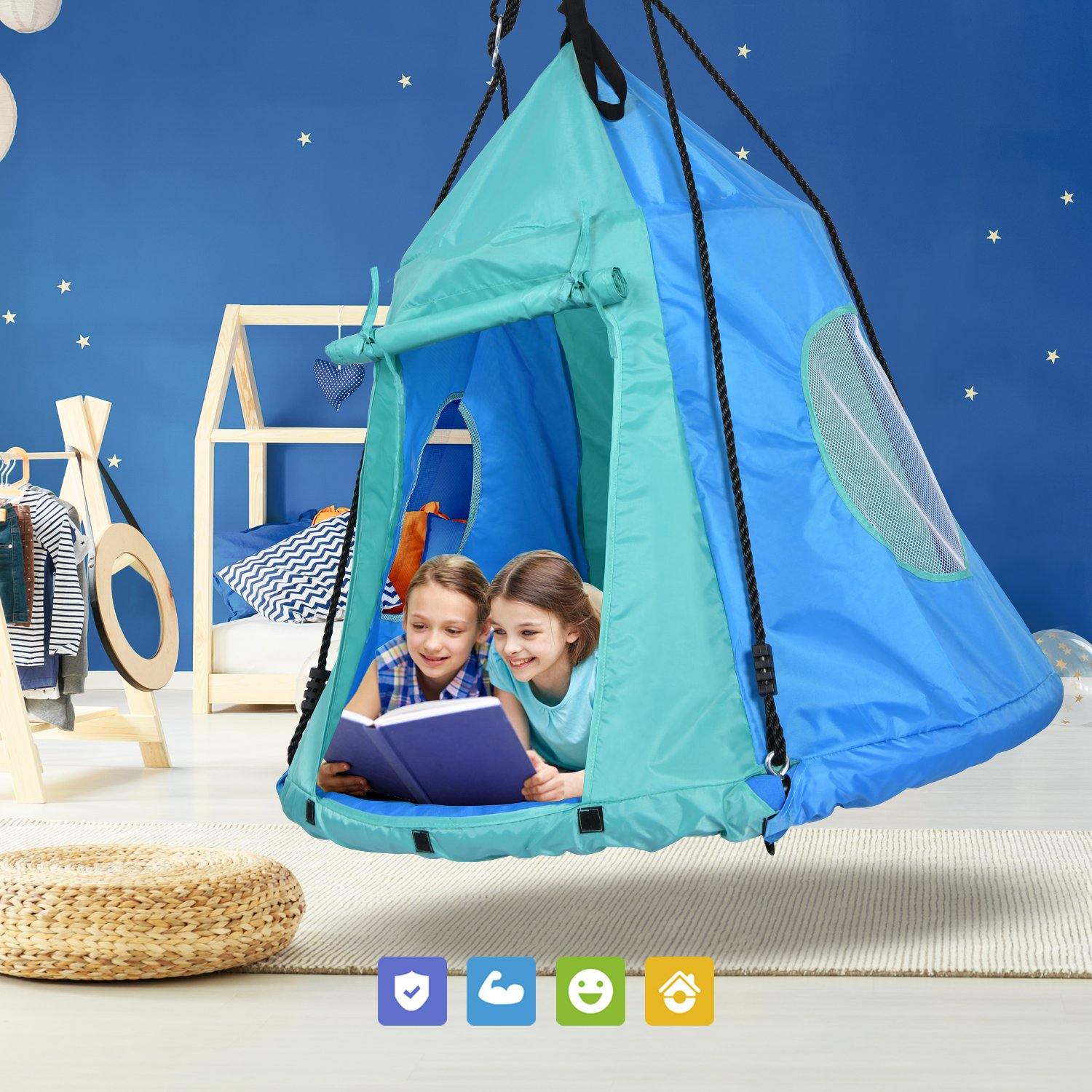
Jan 27 , 2021
0 Comments
What’s the therapy function of swing?
If you have carefully observed the children's world, you will find that in fact, their world is full of swings. From playgrounds to playgrounds, swings are everywhere. At the same time, children also particularly like the feeling of the swing.
In fact, not only all children are very interested in swings, but they are also known as a good medicine for children's balance and autism. Why do you say that?
Before officially talking about the effects of swings, we need to briefly understand movement and the brain nervous system that controls movement. Everyone exercises in various forms every day. Walking, running or climbing, etc., in the process of these actions, you are already involved in sports. And in the brain, it is our vestibular system that controls your movement. The vestibular system refers to the neuroscience sensory system responsible for:
movement
Head position
Spatial positioning
Proprioception
According to Wikipedia: The vestibular system is a sensory system that is responsible for providing our brain with information about motion, head position, and spatial orientation; it also is involved with motor functions that allow us to keep our balance, stabilize our head and body during movement, and maintain posture.
To give a simple example, when you were young, did you play large-scale spinning or swinging games in the playground, would it be because of the violent rotation that your brain did not give you directionality in a short time, causing you to lose How to maintain balance and fall? Of course this is only a very extreme example, but this is a very clear illustration of the vestibular system. The inner ear movement tells the brain where you are, how you feel and how to respond to movement.
Why children may need vestibular stimulation
Almost every child likes swings. If you have ever gone to the park with a child, they often want to sit on your lap while swinging with you, or want to be pushed higher and higher on the swing.
Why do they like that? Besides, why do they need vestibular input.
The first question is that children usually like vestibular input, especially swinging because it is really fun, it releases dopamine (a comfort hormone) and helps them understand their surroundings.
People with special needs usually have difficulty in handling them. Then they can particularly benefit from the additional sensory input. The swing is a good, fun, and simple way to perform sensory input and provide a vestibular system. Swaying, rotating... these all contribute to the vestibular input.
What can the swing do for you?
Swing is very suitable for sensory input. Children can swing on the swing and get proprioceptive feedback, generate visual stimulation with the movement of the surrounding world, and get tactile input from the physical swing itself.
Since the swing is involved in the body and mind, it is very suitable for sedation, because the swing is involved in the entire vestibular system.
Not only that, they are a great way to break the tedium of a school day. From sitting on the bus to sitting in the classroom, children sit in large numbers. The swing can encourage them to increase the blood volume of the head in a healthy way. Increasing your child's heart rate in a fun, safe and therapeutic environment can help them sit down all day and drain some depressed energy. Getting rid of this energy can help them focus in class.
In general, swing is a very effective ninja therapy. Just climb into the swing and sit on the swing (even before you enter), you can encourage hand-eye coordination and physical exercise. Moving back and forth on the swing encourages movement control, balance and physical coordination. The action of shaking the swing can involve the individual's core muscles, thereby increasing their overall strength.

